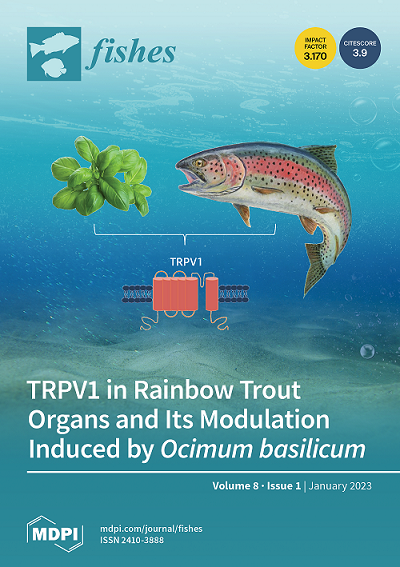Effects of Seasonal Photoperiod on Growth, Lipid Metabolism, and Antioxidant Response in the Huanghe Carp (Cyprinus carpio haematopterus)
IF 2.4
3区 农林科学
Q2 FISHERIES
引用次数: 0
Abstract
Photoperiod is one of the most important environmental cues for organisms, and it plays a crucial role in regulating feeding, behavior, growth, and metabolism. However, seasonal photoperiods are often overlooked in carp culture or experiments, with a poorly understood effect on lipid metabolism and oxidative stress in fish. To explore the effects of seasonal photoperiods, we exposed Huanghe carp (Cyprinus carpio haematopterus) to summer photoperiod (14 h light:10 h dark) and winter photoperiod (10 h light:14 h dark) daylight conditions in an eight-week experiment. Our results suggested that the winter photoperiod significantly increased the liver TG level as well as the transcript levels of genes related to lipid synthesis, indicating that the lipid metabolism in Huanghe carp liver was enhanced compared to summer photoperiod conditions, and that lipid deposition may be responsible for the increase in body weight level and hepatosomatic index. Additionally, MDA, GSH, GSH-PX, and T-AOC levels were significantly elevated in the liver of fish under the winter photoperiod, suggesting that Huanghe carp responded to winter photoperiod exposure-induced oxidative stress in the liver by enhancing the antioxidant response. Based on transcriptome analysis, the winter photoperiod activated hepatic autophagy response and the FOXO signaling pathway in Huanghe carp. Combined with the correlation analysis, the Huanghe carp maintains the physiological health of the liver by activating the FOXO signaling pathway-mediated cell cycle regulation and autophagy response in response to oxidative stress during winter photoperiod exposure. Our study provides the first evidence for the physiological regulation of the liver in Huanghe carp under seasonal photoperiod stimulation.季节性光周期对黄河鲤鱼生长、脂质代谢和抗氧化反应的影响
光周期是生物最重要的环境信号之一,在调节摄食、行为、生长和代谢等方面起着至关重要的作用。然而,季节性光周期在鲤鱼养殖或实验中经常被忽视,对鱼类脂质代谢和氧化应激的影响知之甚少。为了探讨季节光周期对黄河鱼的影响,我们将黄河鱼(Cyprinus carpio haematopterus)暴露在夏季光周期(14小时光照:10小时黑暗)和冬季光周期(10小时光照:14小时黑暗)的日光条件下,为期8周。我们的研究结果表明,冬季光周期显著提高了肝脏TG水平和脂质合成相关基因转录本水平,表明黄河鲤肝脏脂质代谢较夏季光周期增强,脂质沉积可能是其体重水平和肝体指数升高的原因。此外,在冬季光周期下,黄河鱼肝脏中MDA、GSH、GSH- px和T-AOC水平显著升高,表明黄河鱼通过增强抗氧化反应来应对冬季光周期暴露诱导的肝脏氧化应激。转录组分析表明,冬季光周期激活了黄河鲤肝脏自噬反应和FOXO信号通路。结合相关分析,黄河鲤在冬季光期暴露条件下,通过激活FOXO信号通路介导的细胞周期调控和自噬反应来应对氧化应激,维持肝脏生理健康。本研究为季节性光周期刺激下黄河鱼肝脏的生理调节提供了第一个证据。
本文章由计算机程序翻译,如有差异,请以英文原文为准。
求助全文
约1分钟内获得全文
求助全文

 求助内容:
求助内容: 应助结果提醒方式:
应助结果提醒方式:


